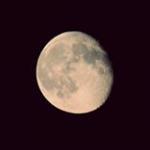
ReinisK
-
Posts
79 -
Joined
-
Last visited
Reputation Activity
-
 ReinisK got a reaction from Juxx989 in Another 35nap 2 3 project
ReinisK got a reaction from Juxx989 in Another 35nap 2 3 project
So here's a short video of some shots I put together from the first time I've brought this kit outside -
Password - eoshd
Shot on Samsung NX1, gamma DR, sharpness -10, UHD 25fps. Canon FD 50 f1.4 @ f2. Cropped sides and most shots stabilized, also added a bit of contrast with curves.
Probably didn't have a perfect alignment of the lenses, but I think it was close. Now need to make a better mounting. Will post some pics of the setup too.
-
 ReinisK got a reaction from elgabogomez in Another 35nap 2 3 project
ReinisK got a reaction from elgabogomez in Another 35nap 2 3 project
Hello guys!
I'm new to anamorphic adapters, have never really looked into these things, but a week ago I saw a 35nap 2 3 projector lens on sale on a local advertisement site, and after a quick research I decided to take it home. It's huge and since I like to have my gear as small as possible, this didn't make me happy. But ok.
First thing I did was take it apart, to have only the lenses, so I could focus closer than 9m. Then I mounted the lenses on my rail system somehow, and tried to test the quality. The mounting system was quite bad, first results were not very encouraging, and I almost gave up on it. The picture was quite soft and of course the experience with double focus is not the best too.
Then I made a somewhat more stable mounting for the lenses so I could align them better. The front lens though is lower than taking lens and rear anamorphic element, but it seems, that it's nowhere near as important to align them vertically as to align the lenses horizontally (and also correct rotation), which immediately gives a sharper image.
I did the aligning using a Canon FD 70-210 f4 set at 200mm f4. It really helped to use such a narrow FOV to get critical sharpness. With the current setup though at 200mm f4 it's not very usable, but stopping down or using a wider FOV increases the sharpness, and once I got the best sharpness at 200mm, the sharpness with 35mm lens was just amazing.
All I can say is - I love the image and I'm really looking forward to making a nice mounting system for the setup. The image is supersharp and it seems like that all across the frame. I even couldn't believe it at first. I did this test with Samsung NX1 and Canon FD 35 f2. There were black sides though with this setup, but those can be cropped off.
Will post pictures with the setup soon and definetely some video examples.
The squeeze ratio seems to change very much depenting on the focus distance. 1m and below does squeeze the image a lot less than further distances. How do you cope with it?
-
 ReinisK got a reaction from Kisaha in NX1 exposure drift on firmware 1.41?
ReinisK got a reaction from Kisaha in NX1 exposure drift on firmware 1.41?
Are you sure it really is exposure shift not the lcd automatically adjusting it's brightness? Do you see the exposure changing also when viewing videos on a computer?
I thought I had this issue, but it was just lcd set to auto. Have to use manual brightness.
-
 ReinisK got a reaction from Antonis in NX1 exposure drift on firmware 1.41?
ReinisK got a reaction from Antonis in NX1 exposure drift on firmware 1.41?
Are you sure it really is exposure shift not the lcd automatically adjusting it's brightness? Do you see the exposure changing also when viewing videos on a computer?
I thought I had this issue, but it was just lcd set to auto. Have to use manual brightness.
-
 ReinisK got a reaction from Marco Tecno in NX1 exposure drift on firmware 1.41?
ReinisK got a reaction from Marco Tecno in NX1 exposure drift on firmware 1.41?
Are you sure it really is exposure shift not the lcd automatically adjusting it's brightness? Do you see the exposure changing also when viewing videos on a computer?
I thought I had this issue, but it was just lcd set to auto. Have to use manual brightness.
-
 ReinisK got a reaction from lucabutera in Petition for Samsung NX1 hack
ReinisK got a reaction from lucabutera in Petition for Samsung NX1 hack
Actually ML had two kinds of HDR.
The older one called HDR video was recording whole frames at different exposures. One frame at iso 100, the other at 1600, for example.
Then came Dual ISO mode (if I remember correctly it was only for raw video). This mode recorded every line of pixels at different iso values, like Kinoseed wrote.
But if talking about the first way, which is HDR video, wouldn't it be possible to write a script that would change the shutter speed or iso for every frame?
-
 ReinisK got a reaction from Kisaha in Gopro 4 black update!!
ReinisK got a reaction from Kisaha in Gopro 4 black update!!
OMG (I have never written these 3 letters in an order like this before), Gopro's new update brings REAL manual exposure to hero 4 black! We can now adjust the shutter and iso and keep constant exposure!
Just wanted to share these great news
-
 ReinisK reacted to chauncy in NX 500 as a cinema camera
ReinisK reacted to chauncy in NX 500 as a cinema camera
H265 from nx1/nx500 can take a pretty substantial color grade. Not as much as raw from my bmcc, but a good deal more than most codecs, I grade straight with h265 in both resolve and premeire, although you can transcode to h264 or whatever before if you choose.
It can be a very cinematic look if you know what you're doing. Never hurts to light a scene in a cinematic way or to use good lens either. But it is a more robust codec than people seem to assume.
-
 ReinisK got a reaction from sandro in Nx1 16-50 2-2.8 exposure change while zooming.
ReinisK got a reaction from sandro in Nx1 16-50 2-2.8 exposure change while zooming.
It happens with all variable aperture electronic lenses, doesn't matter what camera. My tamron 17-50 2.8 doesn't do this, because it has a constant aperture (physically it could be called variable opening since at 50mm opening needs to be wider than at 17mm, to be at F2.8 like MountneerMan wrote). You could think - Ok, I'll just close the aperture to F2.8 (samsung 16-50 lens) and exposure shouldn't change, but it has to adjust the aperture from fully open @ 50mm, to 1 stop closed at 16mm. It cannot adjust the aperture smoothly, that's why there are jumps in exposure at those moments when it opens or closes the aperture. Try opening the lens to 2.0 and then detach the lens (just turn a bit so it doesn't have electronic contact), you should see no exposure jumps, just a smooth 1 stop transition while zooming. Then again, zooming from 16 to 50 with the lens attached correctly and aperture set to 2.0 in the wide end, there also should be no jumps in exposur. But a quick test on my 18-200 F3.5 - F6.3 showed that there are slight jumps, but far less noticeable than if I set the aperture to F6.3 at the wide end.
-
 ReinisK got a reaction from sandro in Petition for Samsung NX1 hack
ReinisK got a reaction from sandro in Petition for Samsung NX1 hack
Tried to test that allocation unit size and if it does anything to improve the slow card problem.
Everything was tested at UHD 25p. Adapted lens. Samsung Pro 16gb SD, 50MB\s write speed, 200mbps hack enabled. Exfat.
Tried to set it with 1024 bytes (min value) - couldn't record more than 3 seconds even without DIS.
Tested it with max value (32768 kilobytes) - could record around 10 seconds without DIS.
512 kilobytes, 4096 kilobytes, 32 kilobytes - a bit better, but still with DIS on no more than 10 seconds, without DIS around 1 minute, sometimes more, sometimes less.
So couldn't get 200mbps working. Also the camera was really slow when turning shutter or iso dials.
160mbps seems to work with and without DIS, also the camera is much more responsive, though not in the level as without the hack. Did this with 32kbytes allocation unit size.
So my conclusion is that as long as you don't set this value to extremes, it doesn't have a huge impact.
Iso 6400 at 200mbps doesn't look much different than at 80mbps.
-
 ReinisK got a reaction from Pavel Mašek in Petition for Samsung NX1 hack
ReinisK got a reaction from Pavel Mašek in Petition for Samsung NX1 hack
Tried to test that allocation unit size and if it does anything to improve the slow card problem.
Everything was tested at UHD 25p. Adapted lens. Samsung Pro 16gb SD, 50MB\s write speed, 200mbps hack enabled. Exfat.
Tried to set it with 1024 bytes (min value) - couldn't record more than 3 seconds even without DIS.
Tested it with max value (32768 kilobytes) - could record around 10 seconds without DIS.
512 kilobytes, 4096 kilobytes, 32 kilobytes - a bit better, but still with DIS on no more than 10 seconds, without DIS around 1 minute, sometimes more, sometimes less.
So couldn't get 200mbps working. Also the camera was really slow when turning shutter or iso dials.
160mbps seems to work with and without DIS, also the camera is much more responsive, though not in the level as without the hack. Did this with 32kbytes allocation unit size.
So my conclusion is that as long as you don't set this value to extremes, it doesn't have a huge impact.
Iso 6400 at 200mbps doesn't look much different than at 80mbps.
-
 ReinisK got a reaction from Pavel Mašek in Petition for Samsung NX1 hack
ReinisK got a reaction from Pavel Mašek in Petition for Samsung NX1 hack
Did a test with 300mb\s in UHD 25p and FHD 100p. The fasted card I have is a Samsung Pro 16gb, which has 50MB\s write speed.
It always stopped after a few seconds. When I put the files in Premiere Pro, it showed weird frame rates. 25fps was in some files 24,77 or something close and 100p was something around 80fps. When the bitrate wasn't hacked, it always showed exact fps, no matter how short the clip was. Another thing - when I brought up the very deep shadows in Premiere. it could very well be seen, that in the beginning of the clip, those shadows consist of huge macroblocks. But when time goes on, those macroblocks get smaller and smaller, until the video stops. It seems that these hacked bitrates need more time to start, and in the beginning the bitrate is somewhat low.
-
 ReinisK got a reaction from vaga in NX1/NX500 Hack Test Footage
ReinisK got a reaction from vaga in NX1/NX500 Hack Test Footage
Those glitches most likely are VLC fault, since it uses it's own codec's (as far as I know). My VLC does the same with 4k nx1 videos. Probably just can't handle it. In Premiere of course, everything is fine.
-
 ReinisK got a reaction from Hanriverprod in Petition for Samsung NX1 hack
ReinisK got a reaction from Hanriverprod in Petition for Samsung NX1 hack
Even before this hack, the shadows could be brought up quite a bit. Even in higher contrast situations than this. When you set the PP levels to 16-235 it actually shows, that the contrast here it no so harsh.
What I'm really interested in is testing these new things against the old things in the same conditions.
-
 ReinisK got a reaction from Pavel Mašek in Petition for Samsung NX1 hack
ReinisK got a reaction from Pavel Mašek in Petition for Samsung NX1 hack
Even before this hack, the shadows could be brought up quite a bit. Even in higher contrast situations than this. When you set the PP levels to 16-235 it actually shows, that the contrast here it no so harsh.
What I'm really interested in is testing these new things against the old things in the same conditions.
-
 ReinisK got a reaction from Beritar in Petition for Samsung NX1 hack
ReinisK got a reaction from Beritar in Petition for Samsung NX1 hack
Even before this hack, the shadows could be brought up quite a bit. Even in higher contrast situations than this. When you set the PP levels to 16-235 it actually shows, that the contrast here it no so harsh.
What I'm really interested in is testing these new things against the old things in the same conditions.
-
 ReinisK got a reaction from /Chop N Shoot Films/ in Petition for Samsung NX1 hack
ReinisK got a reaction from /Chop N Shoot Films/ in Petition for Samsung NX1 hack
Even before this hack, the shadows could be brought up quite a bit. Even in higher contrast situations than this. When you set the PP levels to 16-235 it actually shows, that the contrast here it no so harsh.
What I'm really interested in is testing these new things against the old things in the same conditions.
-
 ReinisK got a reaction from Otto K in Petition for Samsung NX1 hack
ReinisK got a reaction from Otto K in Petition for Samsung NX1 hack
Even before this hack, the shadows could be brought up quite a bit. Even in higher contrast situations than this. When you set the PP levels to 16-235 it actually shows, that the contrast here it no so harsh.
What I'm really interested in is testing these new things against the old things in the same conditions.
-
 ReinisK got a reaction from coco in How to read SONY A7SII's histogram correctly?
ReinisK got a reaction from coco in How to read SONY A7SII's histogram correctly?
It is apparently because, slog has a 16-235 (or something like that) range, whereas other picture styles have 0-255 range. The histogram shows range from 0 to 255 brightness values, but slog's highest value is just 235 - not perfectly white. Same with blacks.
That doesn't mean though, that your image is not overexposed. It actually is, but it is overexposed at 235 brightness value, not 255.
When first time shooting with a picture profile, that has a max value of 235, you have to be careful not to blow out highligts. Because if you don't know, that 235 is the max, you're looking at histogram and thinking - nice, the exposure is ok - but actually your highights are blown out at 235 and there's nothing you can do about it in post.
-
 ReinisK got a reaction from kidzrevil in Petition for Samsung NX1 hack
ReinisK got a reaction from kidzrevil in Petition for Samsung NX1 hack
Looking at the information found about nx300 hack (the one which disables recording time limit), it seems that one way of doing some hacking would be with a firmware update.
Another way of doing it might be through wifi or connecting the camera to pc with a cable. If it would be possible to enter the camera as a developer/debug mode, maybe some code could be changed right in the camera.
As I understand, that nx1.zip file contains the updated firmware 1.4 which is running on the camera. Now when we have access to it, we can find the parameters, that describe the things we need to change, let's try the bitrate first. I just used search and was able to find many mentions of "bitrate" in the zip along with numbers like "min = 6000000" and "max = 8000000". Don't know what these numbers are for, but that is a start. So we need to find the right numbers and pack them in a new firmware update, like the nx300 hacker did.
Here is a description of that process: https://sites.google.com/site/nxcryptophotography/diy-firmware
And then someone needs to be brave enough to test it :D
-
 ReinisK got a reaction from Pavel Mašek in Petition for Samsung NX1 hack
ReinisK got a reaction from Pavel Mašek in Petition for Samsung NX1 hack
Looking at the information found about nx300 hack (the one which disables recording time limit), it seems that one way of doing some hacking would be with a firmware update.
Another way of doing it might be through wifi or connecting the camera to pc with a cable. If it would be possible to enter the camera as a developer/debug mode, maybe some code could be changed right in the camera.
As I understand, that nx1.zip file contains the updated firmware 1.4 which is running on the camera. Now when we have access to it, we can find the parameters, that describe the things we need to change, let's try the bitrate first. I just used search and was able to find many mentions of "bitrate" in the zip along with numbers like "min = 6000000" and "max = 8000000". Don't know what these numbers are for, but that is a start. So we need to find the right numbers and pack them in a new firmware update, like the nx300 hacker did.
Here is a description of that process: https://sites.google.com/site/nxcryptophotography/diy-firmware
And then someone needs to be brave enough to test it :D






